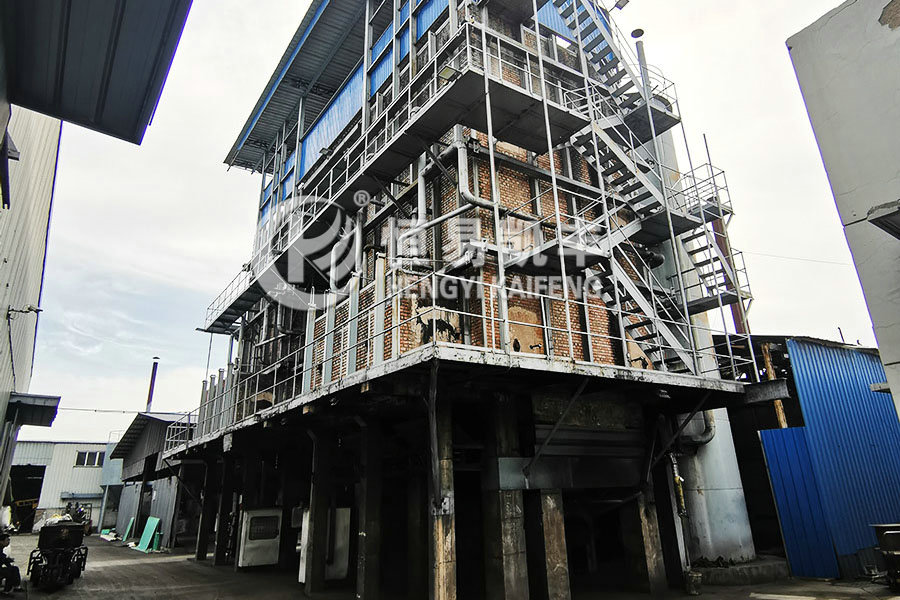The working principle of the production of activated carbon in the sharp activation furnace (one of the production equipment of activated carbon)
Introduction: the production of activated carbon by sharp furnace
The activated carbon equipment, the sharp activated furnace, has been widely used in medical and purification and water use fields in the thousands of years from 3000 BC to the 19th century, from ancient Egypt to China and then to Europe. However, the lack of adsorption capacity in the field of sugar decolorization has become an obstacle to the application of industrial production and life. And the continuous efforts of scientists make the birth of activated carbon possible. The early results show that coke with strong adsorption can be produced during coal distillation; Coke adsorption has a limit, which can not meet the industrial production needs such as sugar decolorization; In the process of distillation, the excess temperature will reduce the porosity and specific surface area, thus reducing the adsorption.
In the early 19th century, the reaction of steam and carbon dioxide activation to produce activated carbon was found, and the large adsorption activated carbon was finally born. In the early days, activated carbon was monopolized by the army and was completely used for gas masks and water purification. Until the end of the first World War, the expansion of production of activated carbon made it possible for civil activated carbon.
In 1966, Taiyuan started the srep activation plant, and then hundreds of srip activation furnace plants were opened in China. This furnace is a Soviet Union invention activated carbon production furnace, which is used to drill the carbonized coke particles further by using water vapor and a small amount of carbon dioxide to increase the porosity, and then greatly increase the specific surface area, and become the active carbon with excellent adsorption performance.

Process principle:
1.1. Reaction involved
Main heating reaction: C (s) + O2 (g) CO2 (g); Δ H<0
Main cooling reaction: C (s) + H2O (g) CO (g) + H2 (g); Δ H>0
C(s) +CO2(g)2CO (g) ; Δ H>0
Side heating reaction: CO (g) + 1 / 2O2 (g) CO2 (g); Δ H<0
H2(g) + 1/2O2(g)H2O(g) ; Δ H<0
CH4(g) + 2O2(g)CO2(g) + 2H2O(g); Δ H<0
1.2. Activation principle
Any kind of high-temperature chemical production, involving the process will be more complex, need to be targeted for each step process analysis and comprehensive analysis of the total process.
Coal is a kind of natural organic high molecular compound, which has the characteristics of large specific surface area and strong adsorption due to its porous and crevice. With the transformation of coal quality from bituminous coal to anthracite, the porosity and specific surface area increase. Using this kind of characteristics, the volatile matter of coal can be removed by dry distillation, the hydrogen and oxygen groups can fall off, the carbon content increases, and the porosity increases, so as to obtain coke (or fired charcoal) with larger specific surface area. Charcoal or coke has high adsorptivity, iodine value can reach 200-400. The main purpose of activation is to further remove the volatile matter from carbonized coke particles, improve the carbon content, and at the same time, make artificial pore through water gas reaction, so as to make the activated carbon with high adsorption rate in a real sense.
The main principles of the physical activation processes are as follows
1.2.1. Retorting process:
The coal is heated to a high temperature above 800 ℃: 1. Supplementary carbonization is carried out to drive out and ignite the residual adsorbed volatiles in the pores of carbonized materials, and the auxiliary temperature is raised; 2. Non carbon groups such as hydrogen and oxygen of coke itself continue to oxidize and fall off, which makes the carbon content continue to increase; 3. The carbon in the outer layer of the coke will also participate in the combustion, and it will be oxidized to carbon dioxide, which will release heat to assist heating up. At the same time, excessive oxygen will be consumed to prevent the carbon in the inner layer from being reacted by excessive oxygen.
At the same time, a large amount of water gas will be produced in each reaction process, which can be used for combustion and auxiliary heating.
Bass found that if the retorting temperature is too high, it may reduce the porosity, thus reducing the adsorption of coke particles.
1.2.2. Drilling process:
At the beginning of the 20th century, when activated carbon equipment was used to produce activated carbon, carbon dioxide was used as pore forming method at one time, that is, when the carbonized material was fully heated to above 600 ℃, high pressure carbon dioxide was introduced to produce C (s) + CO2 (g) 2CO (g); Δ When H > 0, the coke particles will be "broken down", and the porosity and specific surface area will be greatly increased.
After the activation process is mature, we usually use steam pore forming method, that is, when the carbonized material is fully heated to above 800 ℃, high pressure steam is introduced to generate C (s) + H2O (g) CO (g) + H2 (g); Δ When H > 0, the coke particles will be "broken down", and the porosity and specific surface area will be greatly increased.
At the same time, a large amount of carbon dioxide will be produced in the process of retorting and pore forming, which can react with carbonized materials to assist pore forming.
1.3. Exhaust gas
1.3.1. Main products
The activation furnace mainly includes two processes: high temperature retorting and steam cooling. The main reactions were the six reactions in 1.1. According to le Chatelier's principle, the reaction product should be a mixture of all reactants and products. Changing the temperature or pressure and other external conditions can only change the proportion of the components of the mixture, and can not make any components completely removed. Therefore, the tail gas contains combustible gases such as CO, H2 and CH4, complete reaction products such as CO2 and H2O, a small amount of combustion supporting gases such as O2 and a large amount of N2.
The tail gas is oxidized into carbon dioxide and water vapor through the incinerator or converter, and then discharged into the atmosphere from the chimney. The heat generated by combustion can be recycled by waste heat boiler. After a large amount of hydrogen and air are reacted, the remaining nitrogen can theoretically be proportioned to produce ammonia, chemical fertilizer and synthetic ammonium nitrate explosive. Theoretically, large amount of water gas can be proportioned to produce methanol.
1.3.2. Toxic products
1.3.2.1. Organic by-products
The carbonized material still contains about 3% volatile matter, including phenols, aromatic hydrocarbons and other toxic combustible gases produced during carbonization, retorting and water gas reaction, which will enter into the tail gas during activation and heating. This part of tail gas needs to be completely removed by combustion in the incinerator, and the product carbon dioxide and water vapor can be directly discharged into the atmosphere.
1.3.2.2. Sulfur containing substances
① "S-R" (organic sulfur) H2S
② "S" (inorganic sulfur or elemental sulfur produced by reaction) + o2so2
③H2S + 3/2O2H2O +SO2
The above three reactions are the main sources of sulfur in tail gas. Because coal comes from plant corpses, a large number of sulfur elements in protein enter into coal molecules, which can not be completely removed by scientific and technological means at present. Therefore, a large amount of sulfur (yellow smoke) and sulfur-containing tail gas (sulfur dioxide, hydrogen sulfide, etc.) will still be produced in the process of high-temperature retorting, It will directly lead to acid rain and haze, so it needs to be removed.
(among them, I can't draw an accurate conclusion based on my knowledge of hydrogen sulfide generation principle, so I explained it with a friend of China University of mining and technology who was studying in graduate school. After guessing the mechanism of organic sulfur falling off with hydrogen, I got his support, so I wrote it here for reference only.)
At present, the desulfurization technology is to use sodium hydroxide solution spray absorption method, add hydrated lime to make gypsum in wastewater treatment plant, filter and purify the waste liquid, and reuse the fresh water.
1.3.2.3. Nitrogenous substances
① "N-R" (organic nitrogen) NOx (main)
② N2 + o22no (small amount); NO + O2NOx
③ N2 + 3h22nh3 (trace); NH3 + O2NOx
The above three reaction processes are the main sources of nitrogen in tail gas. Because coal comes from plant corpses, a large number of nitrogen elements contained in protein enter into coal molecules, which can not be completely removed by scientific and technological means at present. Therefore, a large number of nitrogen oxides (such as highly toxic nitrogen dioxide, nitrogen tetroxide, etc.) will still be produced in the process of high-temperature retorting, It will directly lead to acid rain and haze, so it needs to be removed.
(2) the process is discovered in recent years. Under local high temperature and high pressure, nitrogen in the air will combine with oxygen to form nitric oxide, and then oxidize to toxic nitrogen oxides, which is the main source of nitrogen oxides in motor vehicle exhaust. In the slipp activation furnace, it meets the conditions of high temperature and local gas vortex leading to high pressure, so it will occur in a small amount.
③ The process should be the main reaction in ammonia synthesis industry, which needs catalyst. However, in the production process, there is a strong ammonia smell in the furnace body and the reused desulfurization liquid. Therefore, it is speculated that the ammonia synthesis reaction may occur in the furnace body. The reason why ammonia gas and ammonia water are adsorbed during coke washing in coking production is not ruled out, which is only for reference.)
At present, sodium hydroxide concentrated solution spray absorption method is also adopted for nitrogen removal, which does not affect the pH value of mother liquor and does not carry out waste liquid treatment except for the deep purification of water body in waterworks.
Process principle of slipp activation furnace
1.4.1 oven drying
The production process of slipp activation furnace is divided into oven drying and formal production. The main task of the drying stage is to raise the temperature of the activation furnace to a suitable high temperature for production. In this process, the furnace wall and furnace body are fully dried after high temperature baking, and have adapted to the high temperature environment, so as to prevent the risk of furnace collapse caused by the subsequent unadaptability to high temperature and uneven temperature.
In high-temperature production-oriented chemical industry, drying of blast furnace is the most important thing. In order to raise the temperature successfully and put into production in the shortest possible time, it is necessary to ensure that the temperature is raised steadily from the bottom to the top, because if there is large fluctuation and uneven temperature, the furnace body may be damaged and its service life will be reduced.
In this process, we need to comprehensively consider factors such as season, wind, auxiliary equipment and steam. All kinds of appropriate measures should be taken to deal with different abnormal conditions, so as to ensure that the slipp activation furnace can be put into operation safely and normally in a short time. It can be said that the drying process has a short time and no normal product output, but it is an important step in the whole activation furnace production process.







 HOME
HOME
 Product
Product
 Tel
Tel